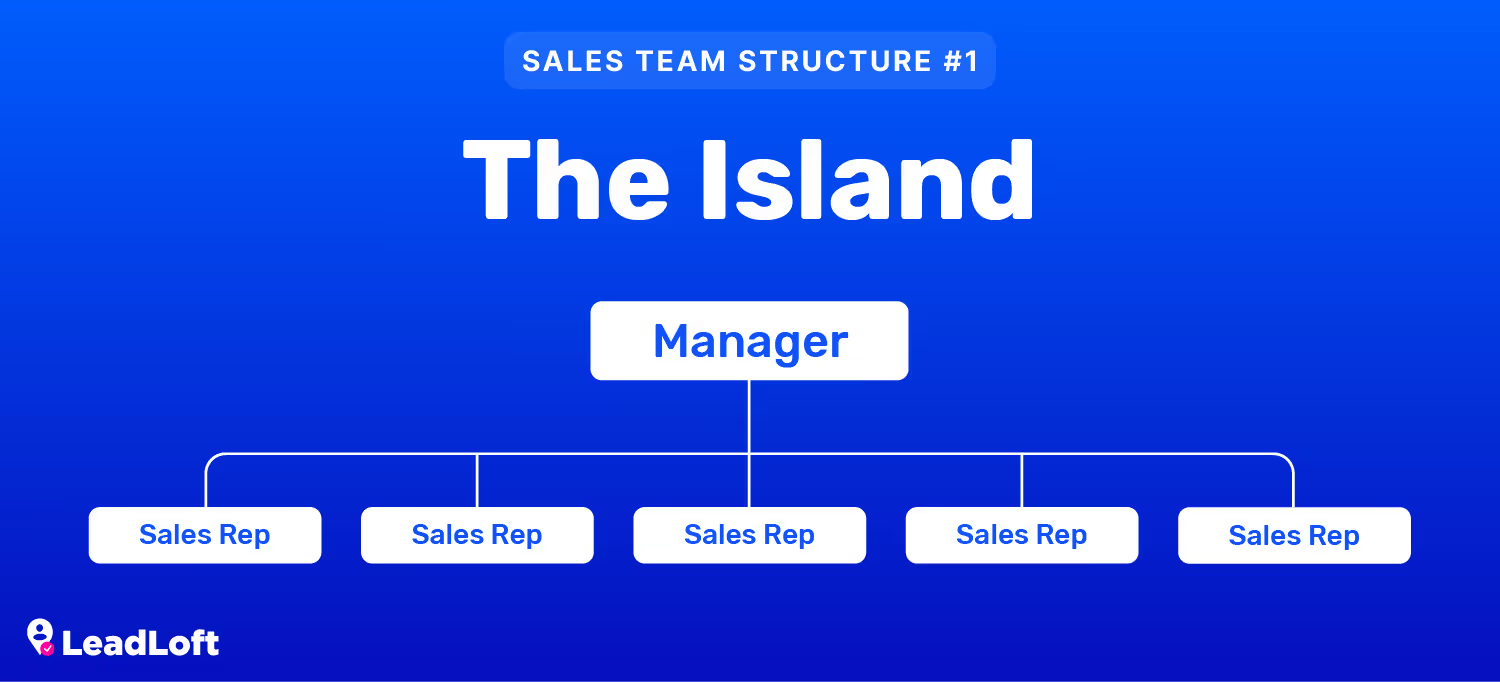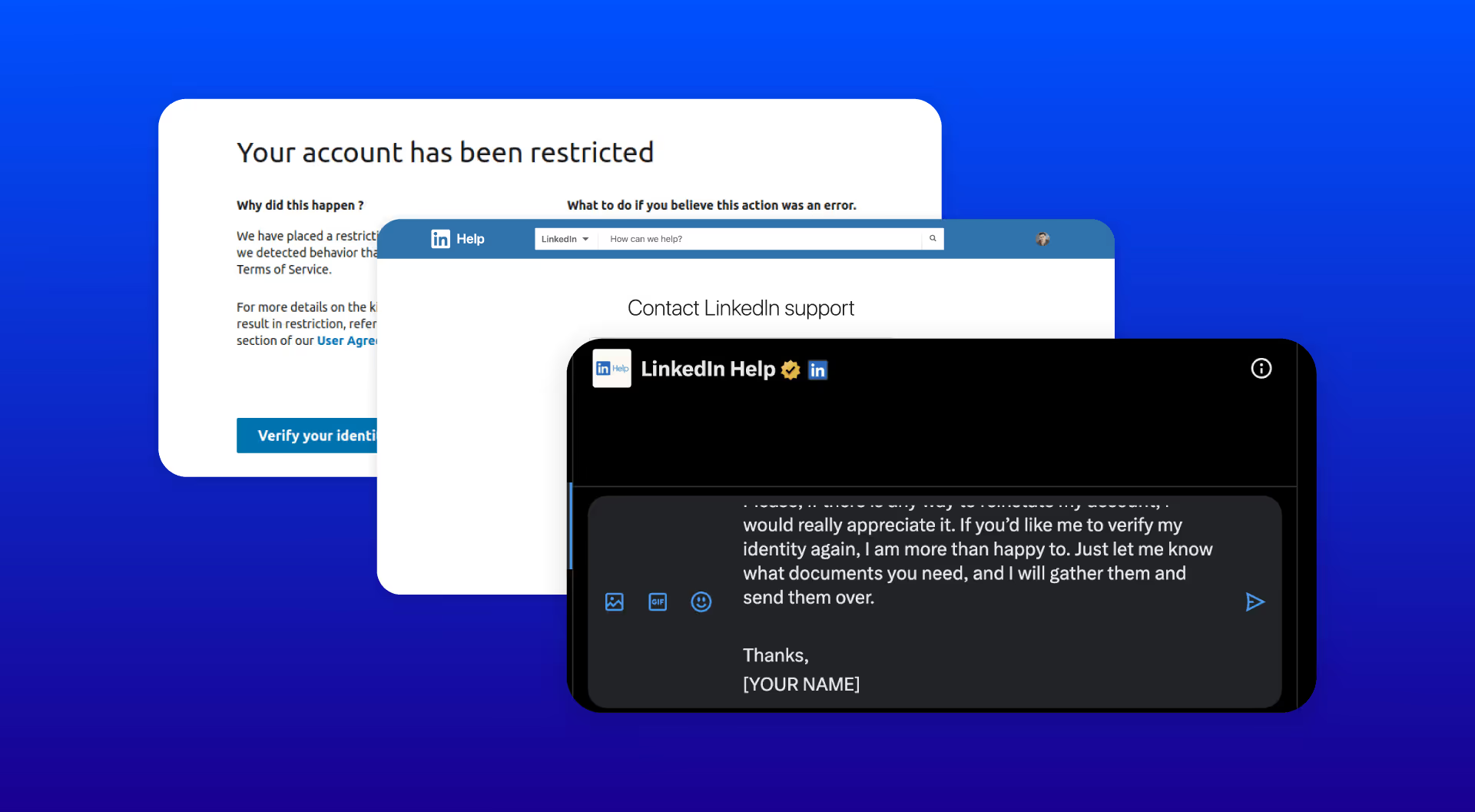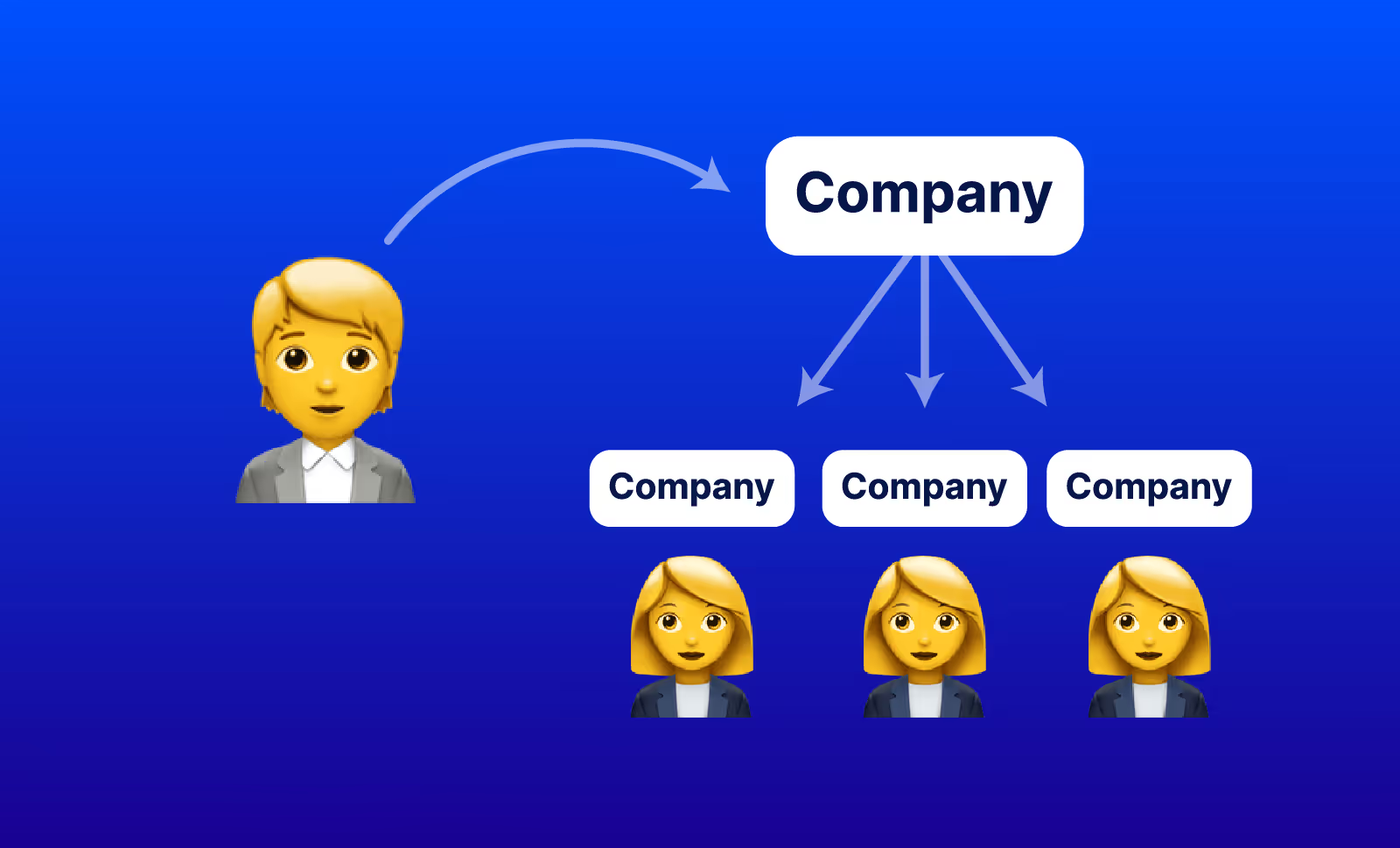Top 3 Sales Team Structures (Pros/Cons & Graphics)


When you’re building a sales team, there are a variety of options when structuring your sales team.
Each structure has its pros and cons but which is right for your team? Well, depending on your product and stage, specific structure may be more advantageous than other. In this article we’ll be breaking down the pros and cons of each and sharing which structure is best for your company.
Let's dive in!
Option #1) The Island

To put it simply, the island is every man for himself. This sales structure is often seen in newer companies because it requires less organization. Unfortunately, it also leads to fewer successful sales reps. When your sales team is not specialized, you’re counting on each individual sales rep to be able to bring in deals and close them.
It’s also worth noting that it’s common to see high commissions and low base pay with this structure, promoting aggressive sellers and demoting low performers.
Pros:
- Easy to Set Up
- Easy to identify high performers
- Supports affordable hires
Cons
- Sales reps are not specialized
- Hard to manage sales reps
- Hard to train sales reps
- Sales reps spend less time learning from each other
- Does not scale well
- Doesn’t support complex sales processes
Use when…
- you’re a small business, startup, or just getting started.
- You have a simple sales process.
- you have little sales management experience.
- your sales team is independent contractors.
Option #2) Assembly Line

The assembly line is one of the most popular methods for scaling a sales team. It allows specific teams to specialize and perfect their specific sales motion. If one aspect of your company is lacking, the assembly line allows you to target a step of the process and solve it opposed to “The Island”, where changing a sales process may require retraining a long list of sales reps.
Pros:
- Team members are specialized / more productive
- Specialized managers make it easier to manage
- Scales well
Cons
- Requires more sales staff to get started
- Can complicate enterprise deals
- Customer journey can feel disconnected because of multiple handoffs
- Can require higher base salaries
Use when…
- you’re running outbound sales.
- you’re in the growth stage.
- you’re looking to get more organized.
- your sales team is salaried.
Option #3) The Pod

The Pod is a great sales structure for building team cohesion. Instead one stage of the funnel vs the other, you force your team to work together to meet pod quotas.
One of the most amazing aspects of pods is the ability to project revenue based on adding new pods. This is because you know the exact cost of each pod and the revenue generated by each pod. If your pods bring in more money than they cost, then you can simply hire additional pods and start scaling exponentially.
Pros:
- More cohesive customer journey
- Forces team collaboration
- Simplifies sales projecting (building blocks)
- Simplifies enterprise deals
- Scales well
Cons
- Requires more sales staff to get started
- Less competitive sales environment
- Managers may have to manage multiple functions
- Can require higher base salaries
Use when…
- you’re running outbound sales.
- you're in the growth stage.
- you have a multi step sales process.
- It's easy to train your sales team.
- you want a more cohesive team.
Wrapping Up
There are tons of different structures for sales teams but at the end of the day, the best structure for you depends on your company. Some teams sell complex products to enterprise companies, while other products may require just one call to close a deal. Regardless, spend time thinking about how each structure will fit into your company and select the one that is best for you.






